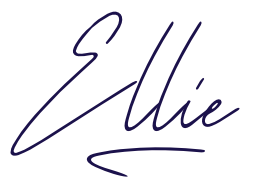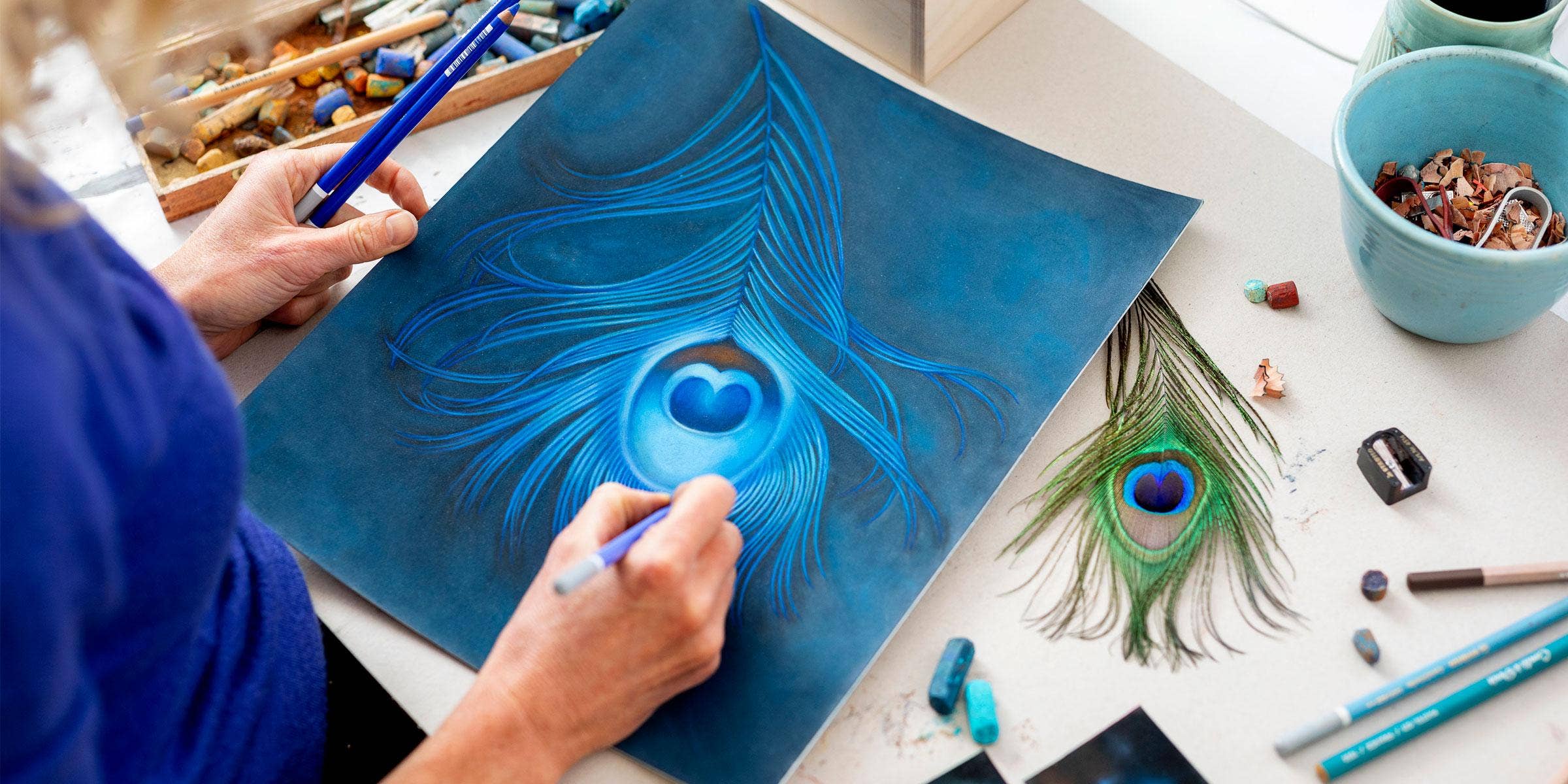
The Story Behind ‘Becoming Wild’
"The peacock has chosen to release his feathers,
and - in so doing - to release himself.
He has chosen to be free, and to see the world
through his own eyes,
rather than the eyes of his audience.
He will test out his wings, and explore -
in his own way, on his own terms -
a world of his own imagining.”
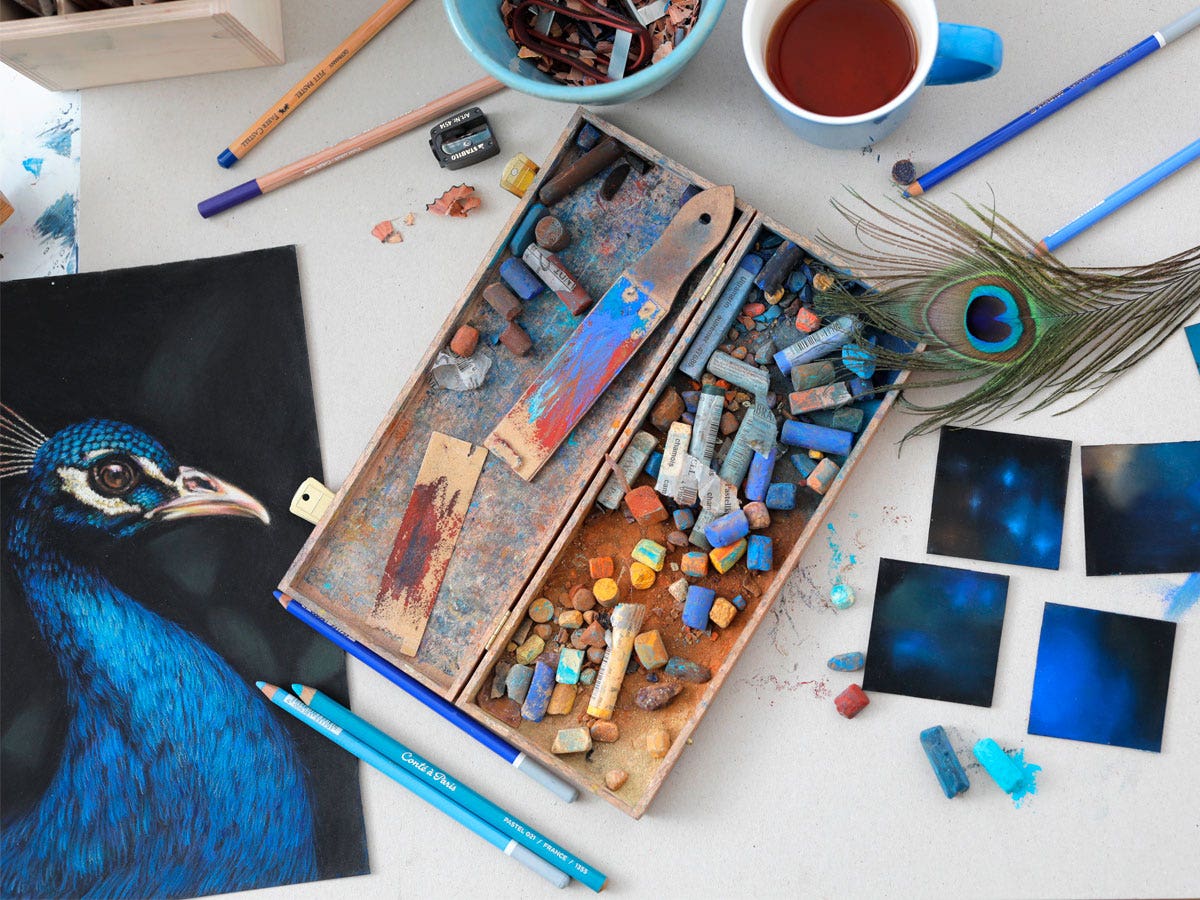
Ultimately, this print symbolizes a process of transformation and transcendence made by the peacock of my imagining. He starts out at Step 1 and ends up at Step 3, in a process that goes something like this:
1. Stuck, wary, anxious, awkward, hiding behind his pride
Historically, the peacock has been associated with pride, and best known for the beautiful spectacle of his feathers.
When I made my first sketch of him in 2016 though, that’s not what captured my imagination. In the peacock, I saw uncertainty, self-consciousness, physical awkwardness and the heavy, gravitational pull that his feathers exert upon him. They weigh him down, keep him grounded, and keep him from exploring the high altitudes that are home to his brother birds. Instead, he clucks around nervously, giving all who dare approach him a wary, warning look.
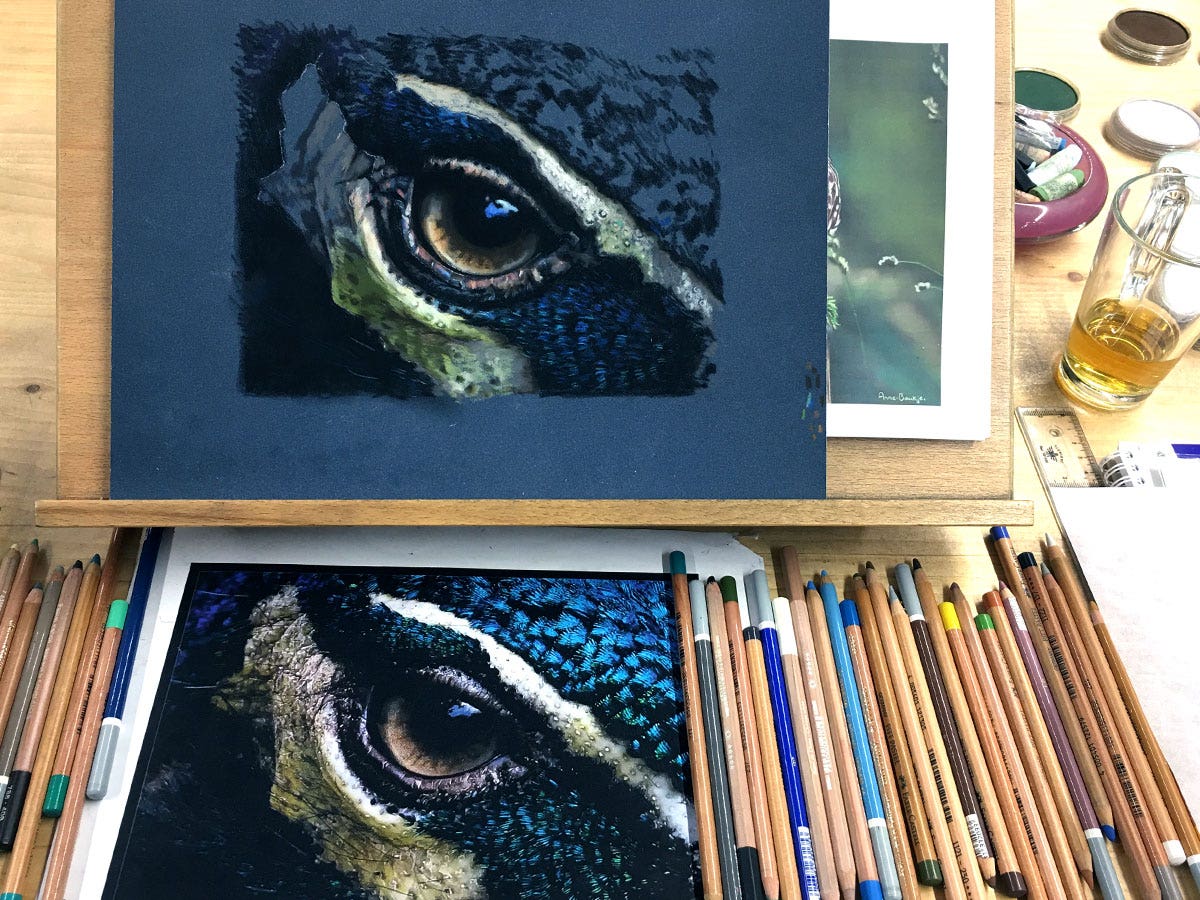
When he fans out his feathers, and turns this way and that, is it that he’s showing off? Or, I wonder, is he warning us to stop right there and not come any closer. To me, his plumage seems to be a spectacular suit of armor that simultaneously attracts us to him, at the same time that it keeps us from getting too close. He asks to be noticed, but not to be truly known by us. What is he actually thinking and feeling?
As I’ve sketched him, again and again, I have imagined him in moments of deep self-reflection, realizing that he has come to a crossroads. He can continue to play this way to his crowd, parading around behind his magnificent feathers, or he can come out of hiding and reveal who he truly is, and truly feels himself to be: a vulnerable living being who values, above all else, true connection with the outside world. This, at the same time that he fears that he might never find, earn, or be worthy of such connection - a fear that many of us share.
I imagine that the peacock’s feathers - so easy to hide behind - are his identifying feature and the aspect of his nature and personality that he must - somewhere in the course of his life, eventually come to reckon with. That is, if he’s to break through the barrier they’ve come to be and make himself - not just noticed - but truly known to the world. He must learn how to engage through his vulnerability, if he’s to truly connect in the way he wants to He must let the feathers go, and expose, instead, what they’ve been hiding. It is through this process of exposure that he can strip down to what has always been there, and what has always been essential, and - quite honestly - the most beautiful thing about him. It’s not his ability to impress us, but his ability to invite us in, and let us see him as he truly is, that ultimately makes him lovable to us.
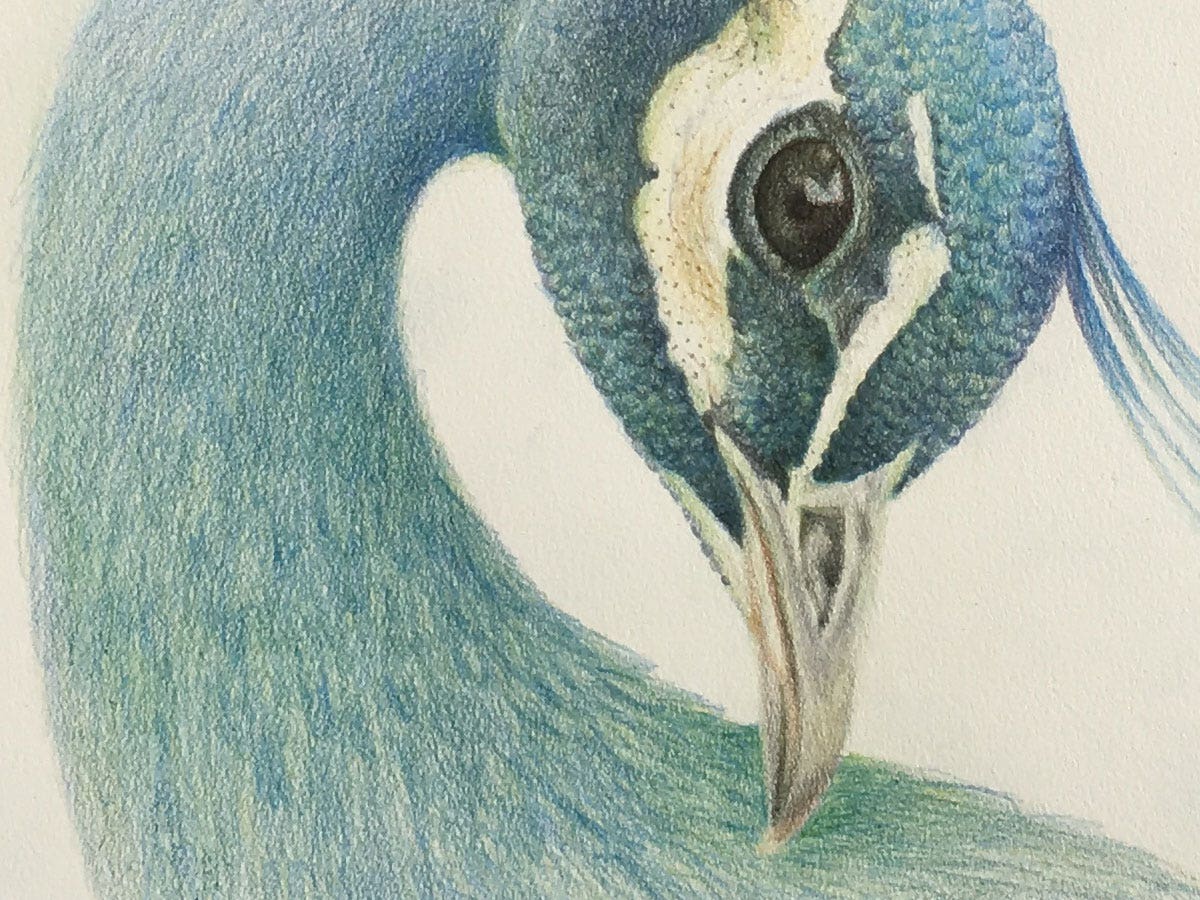
2. Escaping captivity, defying gravity and choosing to explore his inner wilderness
I’ve imagined my peacock in a game-changing moment, where he makes a decision that will determine the rest of his days: He can go back to a neat and simple life he knows, knowing - also - that this direction isn’t taking him where he wants to go. It’s keeping him safe from injury, insult and disappointment, but at the cost of terrible loneliness and isolation. As an alternative, he can investigate a scary, unknown, shadow rhealm of self, where coming to know and understand himself - and, subsequently, be known and understood by others - will only come with embracing and entering into the unknown … into this wilderness that calls to him from within.
He knows that this will be messy, and will mean disentangling himself from fears and limitations that have kept him grounded for years, kept him from growing - and going - further. He knows he might get hurt. He must expose his vulnerability, the very thing he’s been trying to hide. It’s not without considerable risks, but this is his chance to fly.
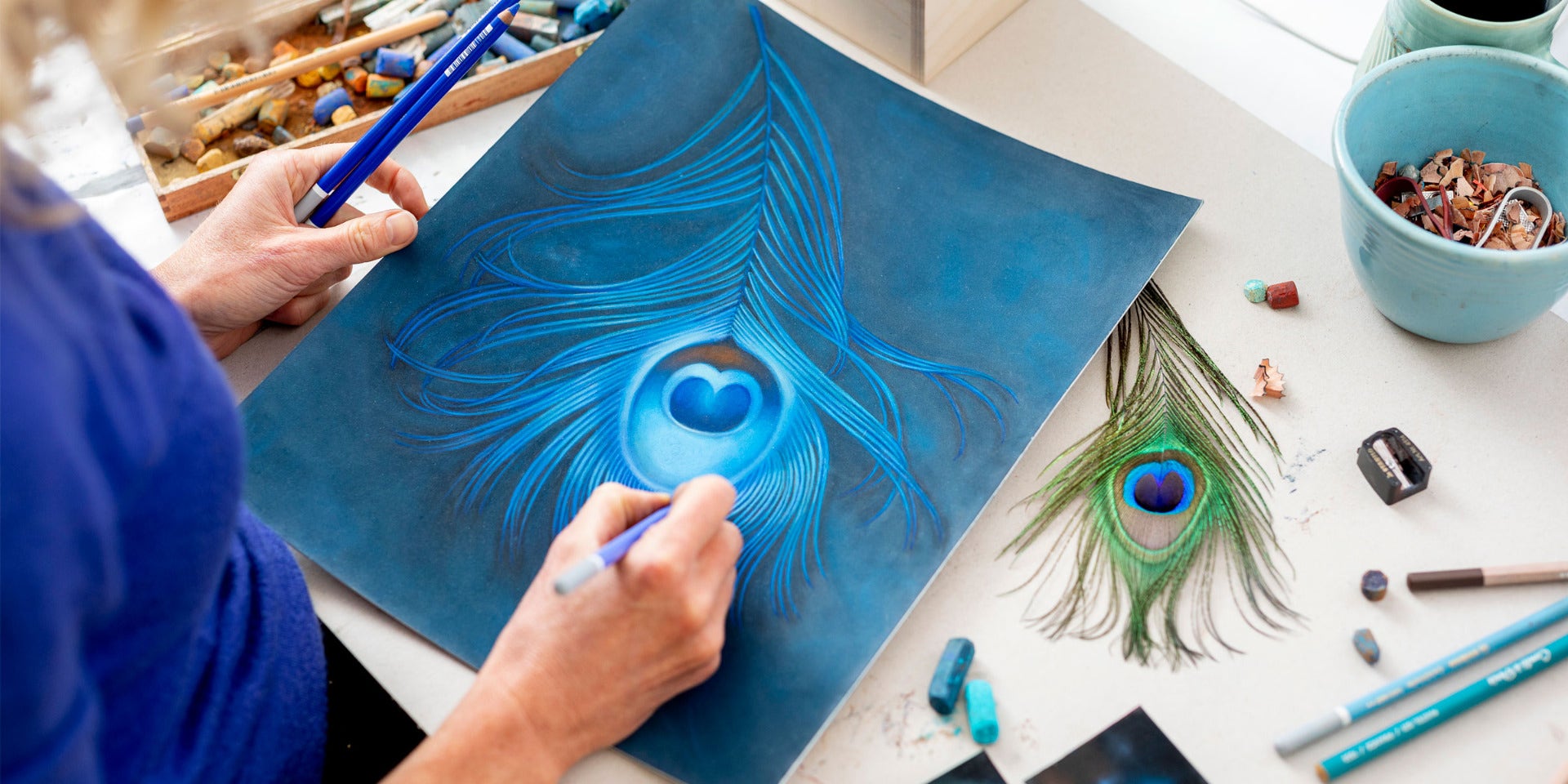
In this design, I’m imagining that a ‘disturbance’ has caused the normally very ordered exterior of the peacock’s tail feathers to release, open and float away. He has made his decision, once and for all. The facade of feathers expands, as if a breath of light and air and space has entered into his body. That breath moves in and out, between his suspended feathers, and in this inhalation, he inherits an emptiness, a lightness, an openness, spaciousness, in the best sense of these words. What he exhales are all the weights not essential, no longer serving him. His body fills with the empty space of possibility, and he launches himself into a new life.
For the first time, he’s able to invite his audience closer, to let them see him in all his vulnerability and incompleteness, emptiness and uncertainty. This is the warm, sparkling, glittering, glowing space where they can, potentially, fill each other’s need for true connection.
According to the Japanese aesthetic concept of ‘Ma’, this empty (negative) space is the dwelling place of possibility, the breath of light and air that allows the peacock’s feathers to go from burdensome to buoyant. Where there was a barrier, there is now the soft, warm and wild embrace of an inner world, exposed. It’s through this exposure that the peacock learns to invite true connection in.
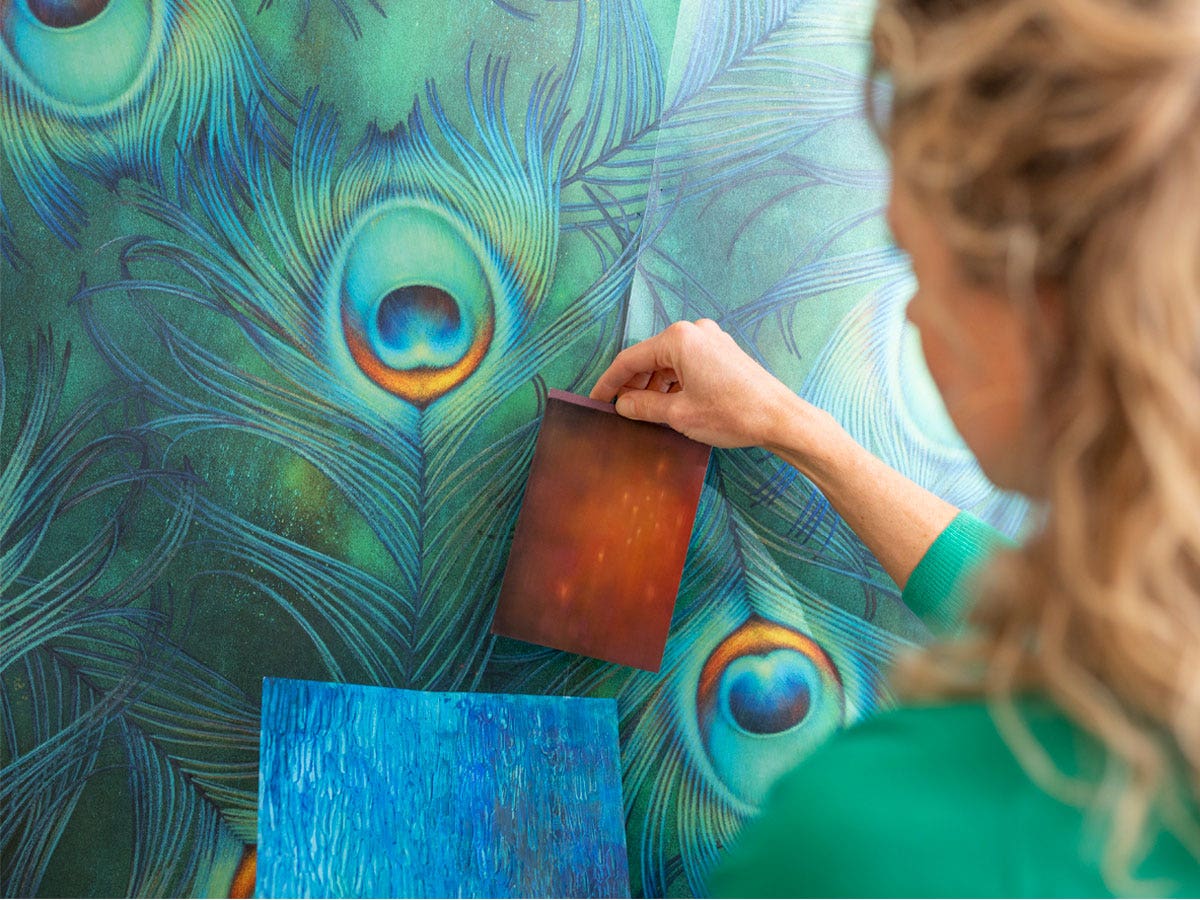
3. Testing out his wings in a world of his own imagining
And so, ultimately, 'Becoming Wild’ is about the peacock deciding to embrace his own, individual imagination, to see himself through his own eyes and live his life on his own terms. In this way, he learns to engage with the world as the bird he truly feels himself to be. As he does so, he will discover a new ability to express the song most specific to his own heart, to know himself, and be truly known to the world.
The peacock in my portrait is, for me, the ultimate, aspirational symbol of positive transformation and transcendence: He started out as an awkward bird - not so very comfortable in his skin, or feathers - but he chooses, in the middle of his life, to release his burden and escape the captivity of old ways of being and thinking.
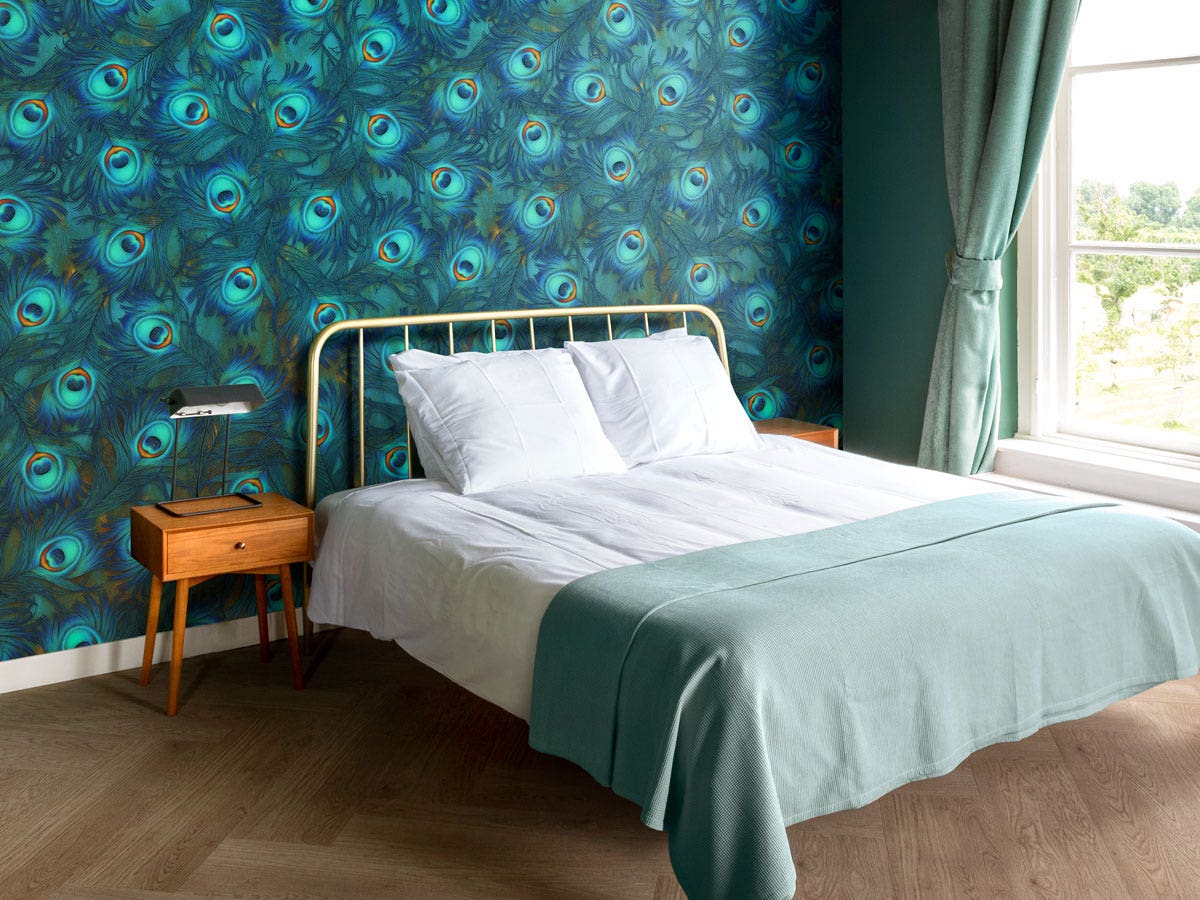
As he does so, the gestures of his feathers become rhythmic, not rigid. They divest themselves of order, obligation and outward expectation, becoming newly elegant and playful, as they negotiate a new relationship with the forces of gravity and take on structures of looseness, fluidity and flow.
In this game-changing moment in the middle of his life, the peacock reminds us of the opportunity that we all have, to heed the call of the wilderness within … to explore ourselves, our identities and our potential more deeply than before. We too can break free from the gravitational forces of worry about how the outside world will perceive - and receive - us, and test our wings in worlds of our own imagining.
These are the worlds that are waiting for us - fragile and vulnerable, raw and challenging, yes, but waiting - all the same - to be filled with our greatest potential.
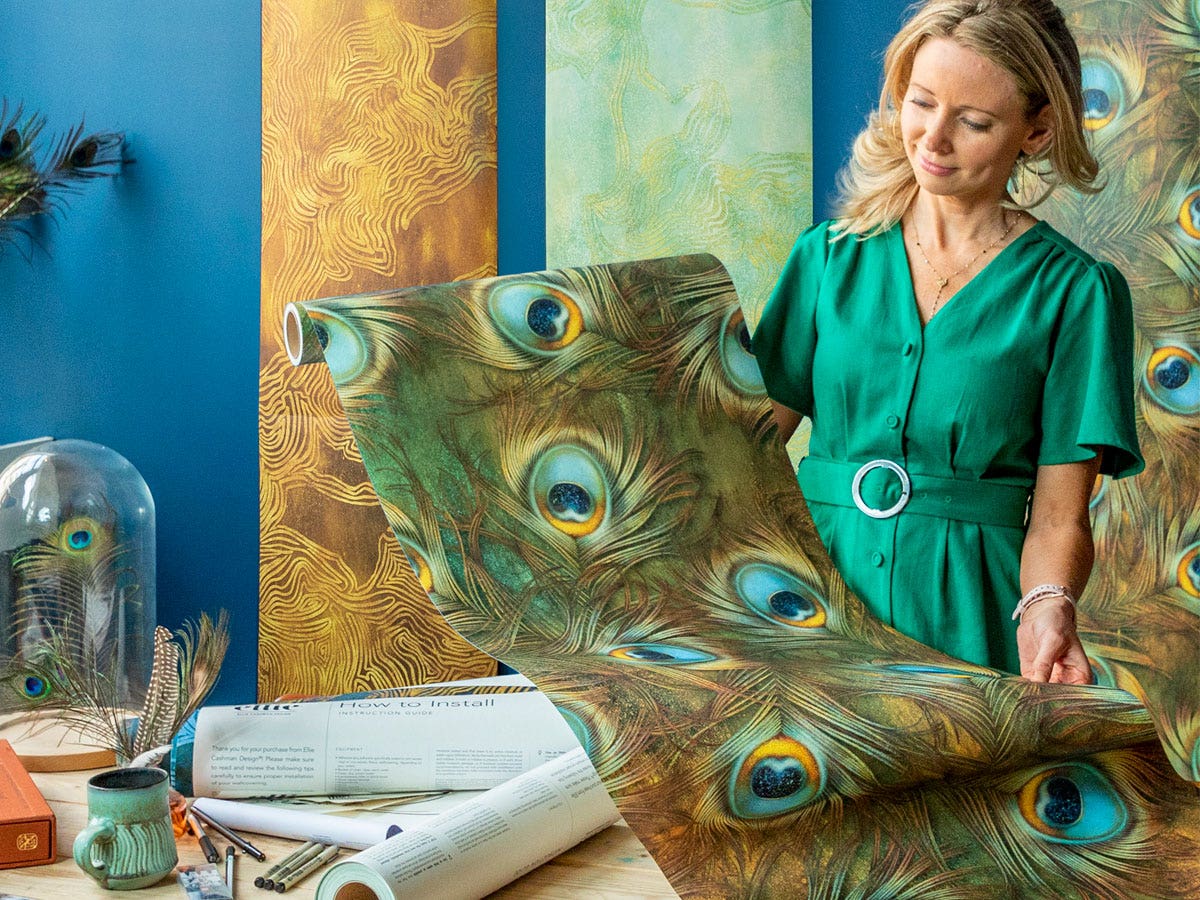
Stay wonder-ful,
